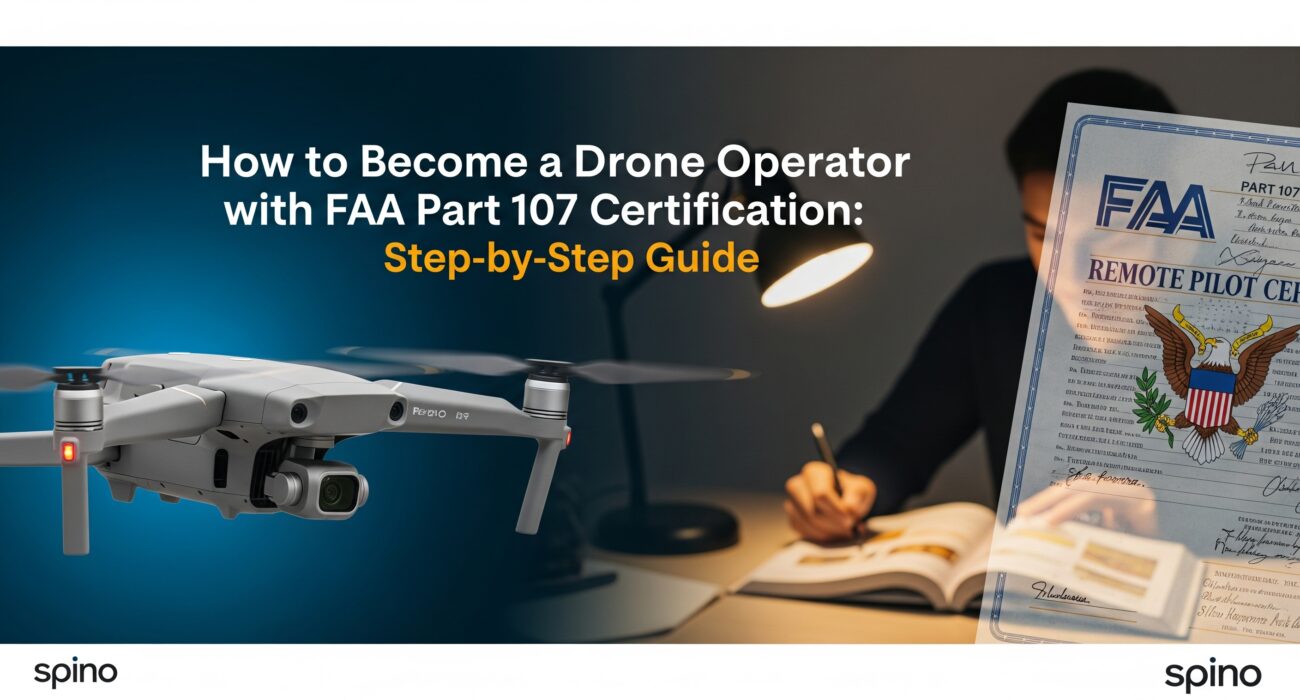How to Become a Drone Operator with FAA Part 107 Certification: Step-by-Step Guide
The drone industry is booming in the United States, creating opportunities in photography, surveying, inspections, delivery services, and more. If you want to fly drones commercially, you’ll need to earn your FAA Part 107 Remote Pilot Certificate — often referred to as a “drone license.”
This guide will walk you through the process, from eligibility requirements to maintaining your certification.
1. Understand the FAA Part 107 Requirement
The Federal Aviation Administration (FAA) regulates all commercial drone operations in the U.S. Under Part 107 of Title 14 of the Code of Federal Regulations, anyone operating a drone for work (or any non-recreational purpose) must be Part 107 certified.
This certification ensures that you understand airspace rules, weather conditions, emergency procedures, and other safety regulations.
2. Meet the Eligibility Criteria
To qualify for a Part 107 certification, you must:
- Be at least 16 years old
- Be able to read, write, and understand English
- Be in physical and mental condition to safely operate a drone
- Pass an FAA Aeronautical Knowledge Test
3. Prepare for the Aeronautical Knowledge Test
The FAA test is 60 multiple-choice questions covering topics such as:
- Airspace classifications and restrictions
- Weather effects on drones
- Emergency procedures
- Drone loading and performance
- Crew resource management
- FAA regulations and compliance
Study Resources:
- FAA’s Remote Pilot – Small UAS Study Guide
- FAA Part 107 online practice exams
- Private prep courses from providers like Drone Pilot Ground School or Pilot Institute
4. Schedule and Take the Part 107 Test
Steps to book your exam:
- Get an FTN (FAA Tracking Number) through the Integrated Airman Certification and Rating Application (IACRA) portal.
- Schedule your exam at an FAA-approved Knowledge Testing Center (via PSI Exams).
- Pay the exam fee (around $175).
- Take the test — you need at least 70% to pass.
5. Apply for Your Remote Pilot Certificate
Once you pass:
- Log in to the IACRA portal and submit your Part 107 application.
- The TSA will conduct a security background check.
- You’ll receive a temporary certificate via email (valid until your permanent certificate arrives by mail).
6. Learn to Operate Safely and Legally
Part 107-certified pilots must follow FAA rules, including:
- Flying below 400 feet AGL (Above Ground Level)
- Keeping the drone within visual line of sight
- Not flying over people (without a waiver)
- Avoiding controlled airspace without prior authorization (use LAANC)
7. Maintain and Renew Your Certification
The FAA requires recurrent training every 24 months to keep your certification active.
You can now complete the renewal process online for free via the FAA Safety Team (FAAST) website.
8. Explore Career and Business Opportunities
With your Part 107 certificate, you can work in:
- Aerial photography & videography
- Real estate marketing
- Construction site mapping
- Agricultural surveying
- Utility inspections
- Public safety & search-and-rescue support
Final Tips for Success
- Practice flying before taking paid jobs. Experience builds both skill and client confidence.
- Invest in quality equipment that meets your business needs.
- Stay updated on FAA regulations — drone laws can change quickly.
By following these steps, you’ll be well on your way to becoming a licensed drone operator under FAA Part 107, ready to tap into one of the fastest-growing technology sectors in the country.

